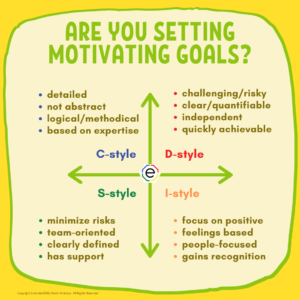Chronic procrastination can affect your career, relationships, and health. It can create an overall negative impact on your well-being and present challenges in achieving your goals.
If you’re struggling with it, you may often wonder “why do I do this to myself??” and feel unsure how to overcome it. Often, the reason why one may procrastinate stems from fear of failure, lack of motivation, or feeling overwhelmed by tasks. Remember that overcoming procrastination takes time and patience, so be kind to yourself in the process.
However, it is possible to overcome the habit of procrastination. By focusing on self-awareness, planning, and consistent effort, you can manage procrastination and increase productivity. This guide provides more information on how to stop procrastinating.
Step 1: Identify Why You Procrastinate
Does any of this sound familiar? You avoid certain tasks because:
- You find the task unpleasant, boring, or overly difficult
- You feel overwhelmed by big projects or goals
- You are a perfectionist and afraid of not doing a perfect job
- You seek the short-term pleasure of fun activities over important tasks
- You lack motivation or struggle with concentration
- You rebel against authority or external control over how you spend your time
Knowing the emotional root cause of your procrastination can help you address it directly. For example, if you find a task unpleasant or boring, try to make it more engaging by setting small rewards for completing parts of it. If you feel overwhelmed by big projects or goals, break them down into manageable steps and focus on one step at a time. Understanding that perfectionism can lead to procrastination may help you accept that completing a task imperfectly is better than not doing it at all. If you seek short-term pleasure over important tasks, remind yourself of the long-term benefits of completing the task. If you lack motivation, try setting specific, achievable goals and celebrate your progress. Lastly, if you procrastinate as a form of rebellion against control, consider how taking charge of your time can actually empower you.

Step 2: Reduce Available Distractions
Our world offers endless distractions, such as social media, YouTube, gaming, and texting friends. With constant notifications and the lure of engaging content, it’s no surprise we struggle to stay focused! The onslaught of information and attention-seeking inputs we all regularly receive can significantly impact our productivity and hinder our ability to accomplish tasks efficiently.
Here are tips to reduce distractions:
- Silence phone notifications
- Close extra browser windows and tabs
- Put your phone in another room while working
- Consider apps that block certain websites during work hours
- Choose a quiet location to work, like a library or home office
Removing external distractions helps direct your mind away from procrastination triggers and towards the intended task.
Step 3: Break Down Big Projects
Often we procrastinate on big, complex projects because we don’t know where to start or the scope seems overwhelming. From lengthy research papers to starting a business, any major goal can trigger procrastination if the process isn’t broken down.
Outline the individual tasks required to complete the project from beginning to end. For example, if your project is preparing a presentation for an executive board, your steps may be:
- Identify key objectives and outcomes – Week 1
- Gather relevant data and insights – Weeks 2 to 3
- Develop detailed slides and talking points – Week 4
- Review and refine presentation – Week 5
- Conduct dry runs and seek feedback – Week 6
With mini deadlines for each step, you have clarity on what to do each day or week rather than feeling paralyzed by how huge the task seems overall. Checking steps off your list also provides a sense of progress. Tools like Magic ToDo can also help you break projects down. Using automation is a great way to get started, allowing the real person behind the work to focus their mental energy on the creative customization and actual deliverables of the project, not just timelines and due dates.
Step 4: Time Blocking
Once you’ve broken down project steps, effective time management is critical for procrastinators. Rather than vague intentions to work at some point, plot out specific blocks of time dedicated to key tasks each day or week.
Create a schedule template that designates set blocks of time to complete prioritized tasks and other activities like:
Monday:
- Work on Q3 budget draft one – 9 AM to 11 AM
- Lunch break – 11 AM to 11:30 AM
- Attend financial planning meeting – 11:30 AM to 1 PM
- Send email replies – 1 PM to 2 PM
- Go for a walk – 2 PM to 2:30 PM
- Pull quarterly report for Q2 & finalize budget for Q3 – 2:30 PM to 5 PM
Sticking to a regimented routine where you assign time for productive work as well as breaks and other tasks helps curb procrastination. You know exactly what to focus on during your designated work blocks.

Step 5: Create Accountability
Now you know how to stop procrastinating. But to stick to the process, it helps to add in a layer of accountability with someone else, an “accountabili-buddy” if you will. The positive influence of trusted colleagues or friends will help you follow through on plans and avoid your personal roadblocks.
Use productivity apps with features that remind you of deadlines or track time on tasks. Some apps provide analytics and reports to help you visualize your productivity patterns and make data-driven decisions to enhance your workflow.
You might consider joining a support group or finding a coach who can help you reach your goals. By discussing your challenges and successes with others, you can gain valuable insights and encouragement. Knowing someone else is monitoring your effort can also inspire follow through. We want to meet others’ expectations of us. Peer pressure can be good sometimes!
Step 6: Goal Setting for Motivation
Finally, clearly defined goals fuel motivation which is essential for overcoming habitual procrastination. If you’re procrastinating, you may be lacking meaning or clarity in what you’re trying to achieve.
Set vivid, emotion-driving goals that get you excited and provide ongoing inspiration to stay focused. Post written goals where you’ll see them daily for self-encouragement. Review and update them regularly. Feel proud visualizing accomplishing targets that once seemed impossible!

In Conclusion
Like any other habit, procrastination can be difficult to overcome but not impossible. Stay patient with yourself – it may take time to see lasting changes. The strategies above turn procrastination triggers into opportunities for better productivity and well-being.
Celebrate small wins on the path towards beating chronic delay. Momentum will build with consistent practice – before you know it, you’ll feel in control of your schedule rather than controlled by it.
Now put down your phone, close those browser tabs and get to work on something you’ve been putting off. You’ve got this!
Leadership Circle covers procrastination consultancy in addition to a myriad of other topics in our Leadership Circle Profile Certification.
Get certified today to start course-correcting your own leadership development as well as the development of your team.






This was beautiful Admin. Thank you for your reflections.
Your blog is a testament to your passion for your subject matter. Your enthusiasm is infectious, and it’s clear that you put your heart and soul into every post. Keep up the fantastic work!